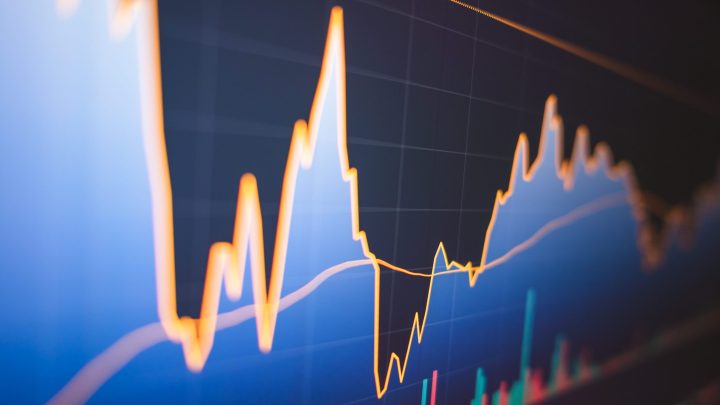
The economy apparently shrank and grew at the same time

Last month, the Bureau of Economic Analysis updated its estimates, as it does, for how the economy performed this year. It grew 2% in the first quarter. It also shrank 1.8%. In the second quarter, it grew 2.1%. But it also grew only 0.5%.
Confused yet?
Turns out there are two ways of measuring the greatest economic indicator of them all. And they don’t always — or even usually — add up.
Gross domestic product is the main indicator we use to measure the size and growth of the economy. It’s the value of all final goods and services, and you can calculate it by adding up all the spending on those goods and services.
“Consumer spending plus investment plus government spending plus net exports,” explained David Wasshausen, associate director for national economic accounts at the Bureau of Economic Analysis. “This is the most well known measure of GDP. It’s taught in Macro 101.”
What you spent on your morning cup of coffee, the coffee shop’s rent, military spending, the corn Iowa exports to Canada — it all goes in there.
Now, second opinions are a good idea for a lot of things, the size of the economy included, and there’s more than one way to measure it. Instead of adding up the spending, another way of measuring the economy is to add up all the money we earn.
What we spend on coffee is what a barista makes in wages and the coffee shop owner makes in profits and the shop’s landlord gets in rent. When you calculate the size of the economy by adding up incomes, it’s called gross domestic income.
So two sides of the same coin — GDI and GDP.
“In theory, these things should align,” Wasshausen said.
In reality, they don’t. Since 1947, there have been only 11 quarters in which the spending number and the income number matched up.
“That’s because the GDP and GDI, they are based on completely different data and independent sources of information,” Wasshausen said.
Here’s one example. A company might spend $1 million on new products in the spring, and that spending would be reported fairly quickly. But the company might not sell all those products till Christmas, so you get the income numbers a lot later.
For that and a lot of other data-related reasons, you get two sizes of the U.S. economy that often don’t quite match. But sometimes, they don’t match even a little. The widest “statistical discrepancy,” as it’s known, occurred in 1993, when the GDI and GDP were off by 2.7% of GDP.
Earlier this year was another of those times — the two were off by 1.9% of GDP, but more importantly, their growth rates were pointing in different directions.
“So in annual terms, GDP is 2.5% higher than it was a year ago, but GDI is 0.5% lower than it was a year ago,” said Stephen Brown, deputy chief North America economist at Capital Economics.
According to the spending version, GDP, the economy grew; according to the income version, GDI, the economy shrank.
“So there’s this very wide discrepancy,” Brown said.
And here is what makes some people nervous. Months, even years, into the future, the BEA revises its estimates. The numbers change. And when you look in hindsight, according to some economists, a more pessimistic GDI is likely to be more right.
“It’s much more likely that GDP growth will be revised down, to say the economy is doing worse than we currently expect, than it is to say GDI will be revised up,” Brown said.
It doesn’t always happen, and the BEA points out the data underlying the GDP number is more reliable. But if it is true this time, it would mean our economy isn’t in quite as good shape as we think.
“A really great example of this is 2007,” Brown said. One version of GDP said the economy grew that year, the other said it shrank. “And we then know that we had the worst recession since the Great Depression.”
Brown sees signs of economic weakness in the current labor market. “We’ve had a lot of downward revisions lately, and if you plot a chart of those revisions versus employment over the long run, it’s suggesting quite a high risk that employment is going to start falling in outright terms.”
He also sees it in tax revenue. “Those have also weakened for the past three quarters running, which is much more consistent with the GDI data than the GDP data. If the economy’s growing, tax revenue shouldn’t really be falling.”
But on the other hand, there are positive signs in the economy. Surveys of manufacturing are improving, the health care sector is still rebounding, Brown said. Consumers are still spending. That’s more in line with the more upbeat, spending-based GDP. And various attempts to combine GDP and GDI suggest that things are improving this year.
But still, ya know, which is it? Did the economy shrink or grow in these past few quarters?
“The truth,” Brown said, “is probably somewhere in the middle.”
Unfortunately, the middle is a rather large place.
Correction (Sept. 19, 2023): A previous version of this story incorrectly characterized some of the components of gross domestic product.
There’s a lot happening in the world. Through it all, Marketplace is here for you.
You rely on Marketplace to break down the world’s events and tell you how it affects you in a fact-based, approachable way. We rely on your financial support to keep making that possible.
Your donation today powers the independent journalism that you rely on. For just $5/month, you can help sustain Marketplace so we can keep reporting on the things that matter to you.











